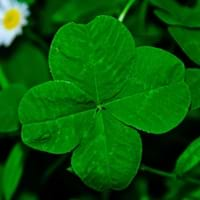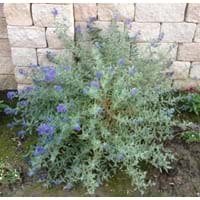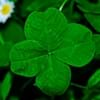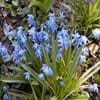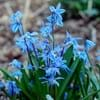Life Span
Perennial
Perennial
Type
Bulb or Corm or Tuber
Shrub
Origin
Mexico
China, Japan
Types
lucky clover is a type of clover
Not Available
Number of Varieties
Not Available
Habitat
Along Railroads, River side, Roadsides
Well Drained
USDA Hardiness Zone
8-10
6-9
Sunset Zone
21,22
4, 5, 6, 7, 8, 9, 14, 15, 16, 17, 18, 19, 20, 21, 22, 23, 24
Habit
Clump-Forming
Oval or Rounded
Minimum Width
Not Available
Flower Color
Yellow green, Magenta, Fuchsia
Blue Violet
Flower Color Modifier
Bicolor
Not Available
Fruit Color
Not Available
Non Fruiting Plant
Leaf Color in Spring
Green, Light Green, Chocolate
Gray Green
Leaf Color in Summer
Light Green
Gray Green
Leaf Color in Fall
Several shades of Green
Gray Green
Leaf Color in Winter
Light Green
Not Available
Leaf Shape
Heart-shaped
Rhomboid
Plant Season
Spring, Summer, Fall
Summer, Fall
Sunlight
Full Sun, Partial Sun, Partial shade
Full Sun
Growth Rate
Medium
Medium
Type of Soil
Loam, Sand
Loam, Sand
The pH of Soil
Acidic, Neutral
Acidic, Neutral
Soil Drainage
Well drained
Well drained
Bloom Time
Late Spring, Early Summer, Summer
Late Summer, Early Fall
Tolerances
Drought
Drought
Where to Plant?
Ground
Ground, Pot
How to Plant?
Seedlings
Cuttings, Rooted stem cutting
Plant Maintenance
Medium
Medium
Watering Requirements
Water every two or three days during warmer months
Needs less watering, Water Deeply
In Summer
Ample Water
Lots of watering
In Spring
Adequately
Moderate
In Winter
Less Watering
Average Water
Soil pH
Acidic, Neutral
Acidic, Neutral
Soil Type
Loam, Sand
Loam, Sand
Soil Drainage Capacity
Well drained
Well drained
Sun Exposure
Full Sun, Partial Sun, Partial shade
Full Sun
Pruning
Remove damaged leaves, Remove dead branches, Remove dead leaves
Remove damaged leaves, Remove dead branches, Remove dead flowers, Remove dead leaves, Remove dead or diseased plant parts, Remove deadheads
Fertilizers
All-Purpose Liquid Fertilizer
All-Purpose Liquid Fertilizer, Apply N-P-K
Pests and Diseases
Red blotch
bees, Red blotch, Whiteflies
Plant Tolerance
Drought
Drought, Drought and Wet Site, Variety of soil types
Flower Petal Number
Single
Single
Foliage Texture
Medium
Medium
Foliage Sheen
Matte
Matte
Attracts
Bees
Butterflies
Allergy
Not Available
Not Available
Aesthetic Uses
Not Available
Beautification, Ornamental use, Showy Purposes
Beauty Benefits
Not Available
Not Available
Environmental Uses
Prevent weeds
Air purification
Medicinal Uses
Not Available
Not Available
Part of Plant Used
Leaves
Not Available
Other Uses
Traditionally considered as lucky plant
Used as Ornamental plant
Used As Indoor Plant
No
No
Used As Outdoor Plant
Yes
Yes
Garden Design
Bedding Plant, Container, Groundcover, Houseplant, Mixed Border, Rock Garden / Wall
Foundation, Mixed Border
Botanical Name
OXALIS tetraphylla
CARYOPTERIS incana
Common Name
Four-leaved Pink Sorrel, Goodluck Plant, Lucky Clover, Mexican Wood Sorrel
bluebeard
you shu
In Hindi
Lucky Clover
Bluebeard
In German
Glücksklee
Blaubart
In French
trèfle porte-bonheur
Bluebeard
In Spanish
trébol de la suerte
Barba Azul
In Greek
τυχερό τριφύλλι
Κυανοπώγωνα
In Portuguese
trevo da sorte
Barba Azul
In Polish
lucky koniczyny
Sinobrody
In Latin
felix Trifolium
Bluebeard
Phylum
Magnoliophyta
Streptophyta
Class
Magnoliopsida
Not Available
Family
Oxalidaceae
Verbenaceae
Genus
Trifolium
Caryopteris
Clade
Not Available
Angiosperms, Asterids, Eudicots
Tribe
Trifolieae
Not Available
Subfamily
Faboideae
Not Available
Difference Between Lucky Clover and Bluebeard
If you are confused whether Lucky Clover or Bluebeard are same, here are some features about those plants to help you choose better. Many people think that these two plants have the same characteristics, but one can see Lucky Clover and Bluebeard Information and learn more about it. Fertilizers required for proper growth of Lucky Clover are All-Purpose Liquid Fertilizer, whereas for Bluebeard fertilizers required are All-Purpose Liquid Fertilizer and Apply N-P-K. Hence, one should know the basic difference between Lucky Clover and Bluebeard if you are planning to have them in your garden to enhance its beauty.
<
Flowering PlantsImportance of Lucky Clover and Bluebeard
Want to have the most appropriate plant for your garden? You might want to know the importance of Lucky Clover and Bluebeard. Basically, these two plants vary in many aspects. Compare Lucky Clover and Bluebeard as they differ in many characteristics such as their life, care, benefits, facts, etc. Every gardener must at least have the slightest clue about the plants he wants to plant in his garden. Compare their benefits, which differ in many ways like facts and uses. The medicinal use of Lucky Clover is Not Available whereas of Bluebeard is Not Available. Lucky Clover has beauty benefits as follows: Not Available while Bluebeard has beauty benefits as follows: Not Available.
Compare Facts of Lucky Clover vs Bluebeard
How to choose the best garden plant for your garden depending upon its facts? Here garden plant comparison will help you to solve this query. Compare the facts of Lucky Clover vs Bluebeard and know which one to choose. As garden plants have benefits and other uses, allergy is also a major drawback of plants for some people. Allergic reactions of Lucky Clover are Not Available whereas of Bluebeard have Not Available respectively. Having a fruit bearing plant in your garden can be a plus point of your garden. Lucky Clover has no showy fruits and Bluebeard has no showy fruits. Also Lucky Clover is not flowering and Bluebeard is not flowering . You can compare Lucky Clover and Bluebeard facts and facts of other plants too.
